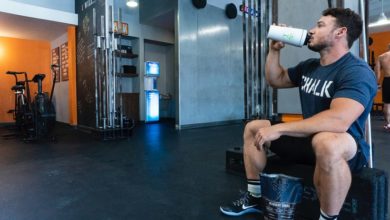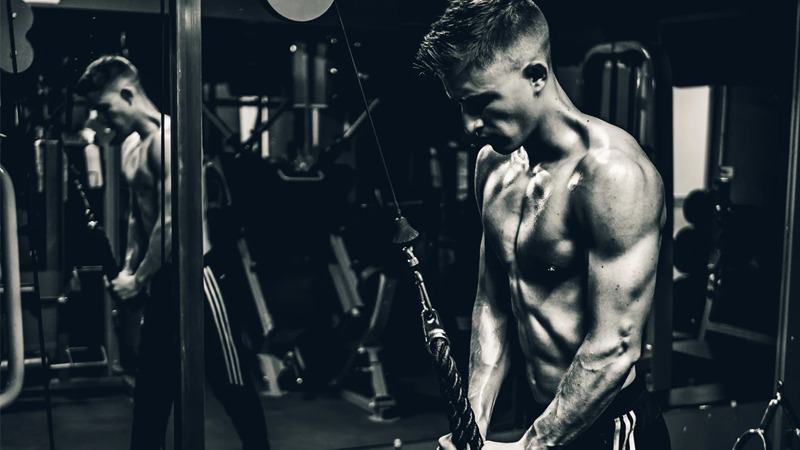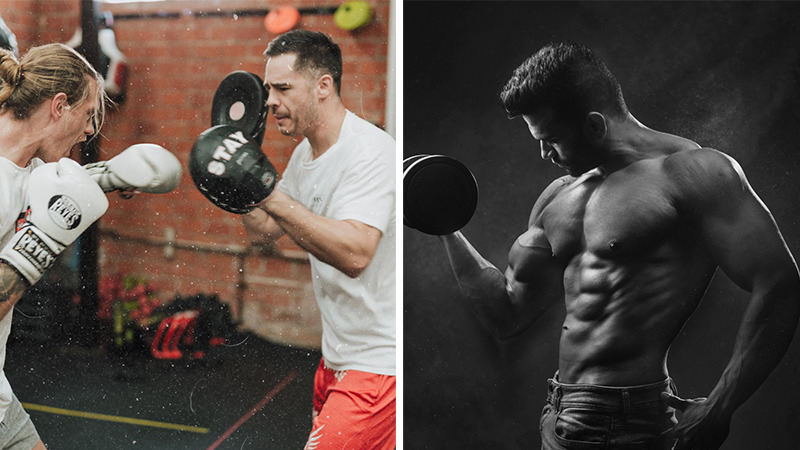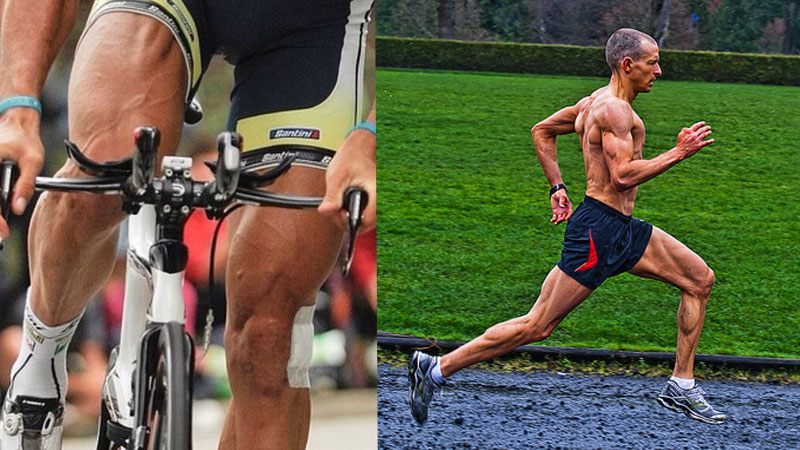
VO2 max is the maximum rate at which your body can use oxygen. It’s linked to your aerobic capacity, endurance and fitness levels.
During tough cardio workouts or sports training and competition you’re working hard to take in oxygen and transport it around your body so that your muscles can use it as energy.
If your VO2 max is low, you’ll struggle to maintain output at high intensity and your aerobic system will crash harder than a patient on day one at the Betty Ford clinic.
But with the right workout plan you can ramp up your VO2 and crush the opposition with your superhero heart and lung power.
This is how…
What Is VO2 Max?
VO2 is a measure of aerobic capacity. It literally means Volume of O2-oxygen and is typically measured as:
- Liters per minute (L.min)
- Milliliters of oxygen used in one minute for every kilogram of body weight (ml.kg.min).
The latter is used more often when measuring VO2 max as it’s easier to compare scores between athletes at different weights.
Otherwise known as maximal oxygen uptake, VO2 max refers to how well you can take in, transport and utilize oxygen during exercise.
The more oxygen you can take in when you breathe and pass it to the muscles, the better athlete you are.
Those with higher VO2 max scores are better all-round performers when it comes to endurance. Whether it’s running, cycling, team sports or even strength circuit sports such as CrossFit.
Higher VO2 max athletes have better stamina, can produce higher levels of power output for longer periods of time, and can perform harder for longer.
They’re basically better at endurance sports.
As exercise intensity increases, so does oxygen consumption
When you take part in a balls to the wall cardio workout or go for a hard run or cycle, the amount of oxygen you need increases massively.
The relationship between how tough your workout is and how much oxygen you need is pretty linear. But after a while, you just can’t provide enough oxygen to your muscles.
It begins to slow down even though intensity is increasing still.
The point where your oxygen consumption completely plateaus is called your VO2 max.
Because it’s the maximum amount of oxygen you can use at high intensity, no matter how hard you try.
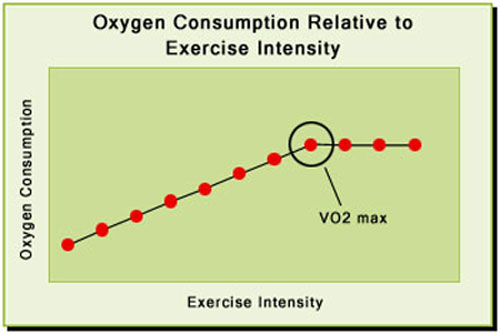
How Do You Measure Your VO2 Max?
VO2 max has been thought of as a gold standard measure of endurance athlete success for the best part of a hundred years.
In order to work out your VO2 max you need to take part in a lab test. You have to wear a gas mask that measures the air you breath in and out, and take part in a treadmill test that gets progressively faster and harder as time passes.
You also have your blood taken every couple of minutes to assess how much lactate is building up in your blood. And your heart rate is taken regularly too as a way to assess how hard you’re working.
VO2 max testing in a lab is classed as maximal.
You need to run and run until you hit the point of exhaustion.
We’re not talking about stopping because your legs are tired. We’re talking going to the point of true fatigue – passing out or throwing up.
This test isn’t for pussies.
There are other versions of VO2 max testing such as the Rockport walk test or Cooper run, but for the most part these aren’t as reliable as a lab test, as you’re relying on mathematical formulas to ‘guess’ your score.
The unfortunate thing is that lab tests aren’t cheap and are usually reserved for proper athletes with medical teams at their disposal.
What’s a normal VO2 Max?
Because VO2 max factors in things such as body weight, gender and height, there’s no one universal score.
Instead, norm tables show you what someone of your age and gender needs to achieve to be a good athlete (or not).
Below is a breakdown of scores for your age group:
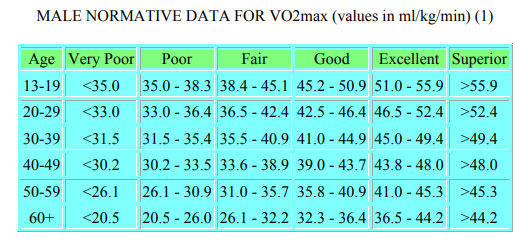
Just for the record, pro triathletes after have VO2 max scores of 80-85 ml.kg.min and cross some cyclists have been said to have scores of over 90!
How to Improve VO2 max Levels – Train Like a Pro
Much like training with weights improves muscle size, cardio training improves fitness levels.
Unfortunately your potential to improve your VO2 Max is partly down to genetics.
Remember back in high school when there were some dudes that could run and run with absolute ease, even though they didn’t train?
Whereas you were left on the floor gasping for dear life after five minutes?
In the same way you can’t train a Chihuahua to be a Great Dane, you can’t take a dude with poor genetic potential and turn him into the next Greg LeMond.
As the old saying goes…
“If you want a high VO2 max you need to choose your parents carefully”.
BUT.
Even if you’ve got poor fitness and stamina, there’s plenty you can do to get better at endurance sports.
And as much as 50% of your endurance ability comes from training the right way. The rest is purely down to your genetics.
Ramping up endurance with the right training program
Research shows that the best way to improve your VO2 max is to pull up your socks, lace up your sneakers and hit the road for some hard running or cycling.
But not just any type of cardio though.
Interval training seems to be most effective.
Especially those that push you to work at a pace near to or at your VO2 max (90% of max or above).
A recent meta-analysis in PLOS One found that both interval training and interval training combined with moderate intensity ‘steady state’ cardio improved VO2 max.
But not steady state on its own.
The best improvements were seen with intervals that were longer in duration.
The best VO2 max increasing workouts
- 3 kilometer race pace – performing a one-time 6-9 minute 3 km session forces you to perform at your VO2 max.
- 4 x 3 minute hard run – perfect for beginners, these short intervals are rewarded with 2 minute rest times between reps.
- 4-5 x 1000 m runs – repeated 1000 m runs combines intensity with duration to really push the boundaries of your fitness. Just make sure you get a work-to-rest time of around 1:2 to optimize productivity.
- 6 x 800 m runs – there’s something just awful about the 400 m. Intervals of this length are said to be optimal for improving your VO2 max. Rest as long as you need to recover between reps.
Strength Training Can Also Ramp Up VO2 Max
There’s no denying that if you want to get fitter and improve your stamina levels, cardio is a great tool.
But it seems that some types of strength training are also effective too. With High-Intensity Resistance Training (HIRT) being the best for spiking your VO2 max.
Use high-intensity interval training to improve your VO2 max
If you’re not too familiar with HIRT, it’s a type of interval workout using weight training exercises instead of cardio.
You choose 5-8 compound exercises such as squats, deadlifts, pulls and presses, and load the bar up so that completing 6-15 reps of each exercise is a struggle.
Once you’ve planned your workout, you need to choose an interval length.
10-15 minutes works well.
Go from one exercise to the next without resting.
Or at least, if you have to rest, try to keep it to a minimum. Blast through as many exercises and as many sets as you can in the time you’ve given yourself.
Recover when the timer goes off… and then go again for a second circuit.
You can either perform the same circuit workout again or change up the exercises to keep things interesting.
The benefits of HIRT
Not only does high-intensity interval training boost VO2 max and overall fitness levels, it also provides a number of other important benefits too:
- Improves metabolic rate and boosts fat loss
- Elevates energy expenditure
- Builds more muscle
- It’s short, sharp and productive
- You can use any type of fitness equipment
Summary – Improve Your VO2 Max and Fitness Levels
VO2 max is the maximum rate at which you can take in and use oxygen during intense exercise.
Those with higher oxygen uptakes have better endurance, stamina and fitness. They excel at sports where power output over a period of time is key for success – running, cycling and swimming being perfect examples.
Although your VO2 max is largely down to genetics, you can improve it using training techniques such as high-intensity interval training and high-intensity resistance training.

